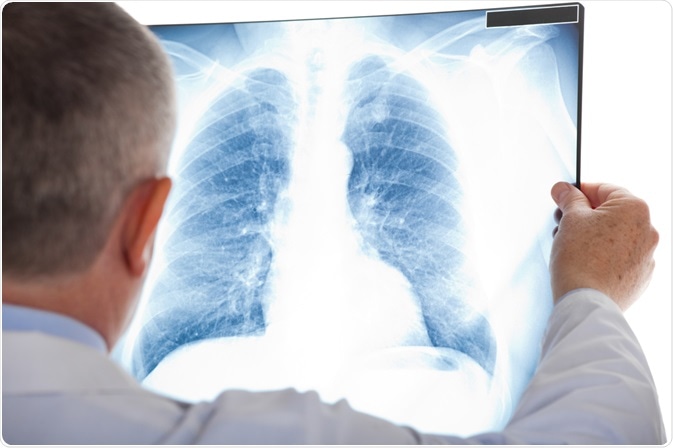Pulmonary function testing is used to measure the function of the lungs, as well as diagnose or monitor the progression of respiratory conditions.

Image Credit: Minerva Studio / Shutterstock.com
There are various tests used in practice to provide this information, each of which has a unique procedure and benefit for the patient. The results of pulmonary function testing are normalized according to the individual characteristics of the patient. Abnormal results can therefore indicate the need for further investigation as to the cause and suitable treatment options.
Purpose of testing
Pulmonary function tests are able to provide very useful information about the function of the lungs and respiratory system. These tests may be requested as a routine check-up, to investigate symptoms related to lung function, monitor the efficacy of treatment for a lung condition or assess lung function prior to surgery.
Pulmonary function tests can help in the diagnosis of various respiratory conditions, such as:
- Asthma
- Chronic obstructive pulmonary disease (COPD)
- Pulmonary fibrosis or scarring of the lung tissue
- Bronchitis
- Emphysema
- Sarcoidosis
Pulmonary Function Test for Children with Cancer
Additionally, these tests can help to monitor changes in lung function or the effect of medication, particularly for individuals that are affected by certain respiratory conditions.
Types of tests
There are several different types of pulmonary function tests that may be used to provide information about certain respiratory conditions.
- Spirometry is a test that involves the patient breathing as forcefully as possible into a tube that is connected to a machine, which measures the volume and flow rate of the air.
- Body plethysmography is a test that measures the volume of the air in the lungs, both when an individual inhales deeply and after exhalation.
- Lung diffusion capacity is a test that measures the efficiency of oxygen transfer from the lungs into the bloodstream.
- Blood oxygen tests, such as pulse oximetry and arterial blood gas test, are used to measure the concentration of oxygen present in the blood.
- The exercise stress test is used to measure the function of the respiratory and cardiovascular system in response to controlled exercise.
Result measurements
The results obtained from pulmonary function tests are important in assessing lung function and determining the involvement of certain conditions. The different types of data that can be obtained from these tests include:
- Peak expiratory flow (PEF)
- Forced expiratory volume (FEV)
- Forced vital capacity (FVC)
- Residual volume (RV)
- Expiratory reserve volume (ERV)
- Slow vital capacity (SVC)
- Total lung capacity (TLC)
For each of these data points, normal values will differ according to the specific characteristics of the individual, such as age, height, weight, gender, and ethnicity. As a general rule, values that are 80% less than normal warrant further investigation and possible treatment.
Advice for patients
Pulmonary function tests are usually simple and painless, mainly involving measurements of the way the patient breathes. Some individuals may find that they feel light-headed or experience shortness of breath during the tests.
Patients are typically advised to refrain from smoking or eating a heavy meal 4 to 6 hours prior to their pulmonary function test. Additionally, medications that may affect the results of the test, such as bronchodilator medications, may need to be ceased for a period before and/or during the test, depending on the specific case at hand.
Pulmonary function testing is not recommended for patients who have had a recent heart attack or surgery of the eye, chest, or abdominal region. Additionally, a pulmonary function test may be contraindicated for individuals with a severe respiratory infection or heart disease.
References
Further Reading